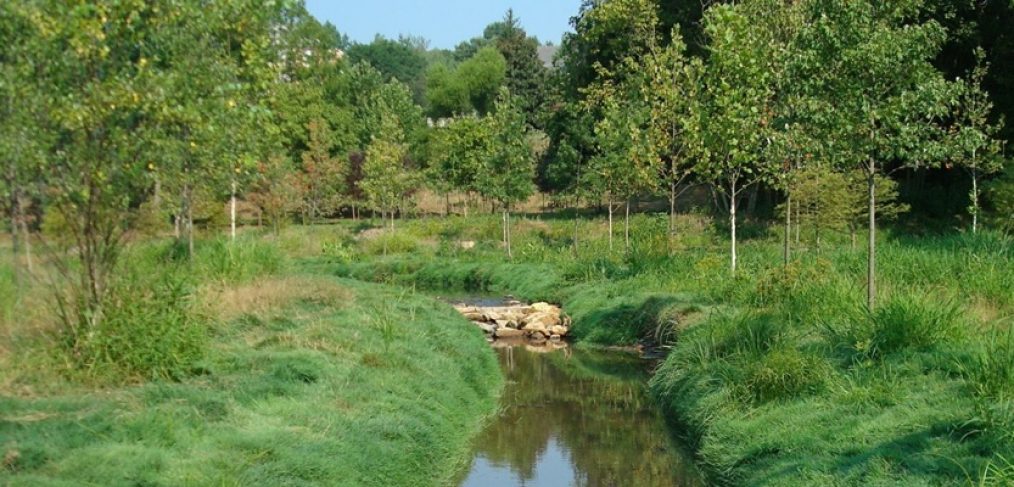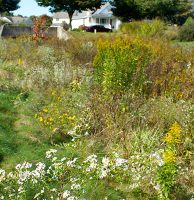
Don’t Just Plant Them and Leave Them Alone: Riparian Buffer Maintenance
Routine maintenance is extremely important in order to ensure the long-term success and usefulness of a riparian buffer. Many people are putting time and energy into stream restoration. One way they do this is through the planting of riparian buffers. A riparian buffer is the vegetated area along a stream or river. It may consist of grasses, shrubs, wildflowers, trees, or a combination. These buffers protect the waterway from nearby land uses, and in the case of trees, can shade the water, keeping it cool for species like trout.
Riparian buffers play a key role in protecting water quality, but they cannot just be planted and then forgotten about.
Steps to Riparian Buffer Maintenance
Maintenance should begin immediately after the buffer has been planted. The following steps are recommended to improve the survivability of your riparian buffer, although this may not be an all-inclusive list:
- Visually inspect the buffer annually and after major storm events to see if any damage or problems have occurred.
- Control weeds as soon as possible, before they grow out of control. Weed control will vary, but may include mowing, selective use of herbicides, mulching, and other integrative vegetation management (IVM) techniques.
- Replant/reseed any areas where your plants have died or been washed away by flood waters. Empty soil spaces are invitations to weeds and invasive plants.
- If tree tubes are used, regularly inspect them to make sure they are not too tight on the tree, that small animals or insects have not built nests inside the tubes, and that the tree is growing properly. Replace or remove the tubes as needed.
- In later years, prune and thin trees and shrubs to ensure adequate growing space and optimal growth rates.
For more information about riparian buffer maintenance, visit http://www.cbf.org/document.doc?id=257.
Budgeting for Maintenance
Because riparian buffer maintenance is so important, the cost of maintenance needs to be included in a project budget. This is not just a year-one line item, either. Maintenance will need to be budgeted for through the life of the buffer, which will be decades. Of course, maintenance will be more intense in the early years, as new plants get established. Once the trees are mature they will shade out many of the competing weeds.
And maintenance will vary depending on the surrounding land uses – if the neighboring property is full of weeds that are not managed, chances are they will grow into your buffer. Know the costs of long-term maintenance at the beginning of the project so you will have a greater chance of success. Why spend thousands of dollars installing a buffer only to have it fail a year or two down the road?
Who Should Do the Work?
Because riparian buffer maintenance requires holistic thinking about how the plants, water, wildlife, and land uses function together, the person(s) performing the maintenance should have at least a basic knowledge of each of these elements. It is not enough to know how to operate a mower or be certified in herbicide application, the maintenance staff should also know why water quality is important and why minimizing impacts to wildlife is essential. Staff from the local conservation district can assist with this, and training opportunities may be available from a nearby university or non-profit.
Closing Thoughts
It’s great that more people are restoring riparian buffers. The PA Department of Conservation and Natural Resources is even providing grant funds to local governments and non-profits to do so (http://www.dcnr.state.pa.us/forestry/yourwoods/streambuffers/riparianbuffergrant/index.htm). I just hope that each of these projects is making sure that long-term management and maintenance of these buffers is factored into the budgeting process and being taking seriously. Otherwise a lot of potentially great buffers will not survive.


